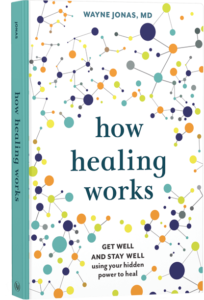When you break your leg, undergo surgery, or burn your hand, you experience pain—acute pain. With treatment and time, the pain usually disappears. But chronic pain is different. It hangs around even after the original illness or injury has improved, reminding you every day that it has no plans to vacate the premises.
Technically, chronic pain is diagnosed if it persists three to six months or more after an injury or disease heals. Sometimes there is a clear cause of the pain—such as arthritis—but other times there isn’t a specific trigger or underlying illness or condition. For instance, current science suggests fibromyalgia is a chronic pain condition without a specific cause that is likely related to changes in how the brain processes pain. Sometimes people may feel pain in places distant from where the original injury occurred, something called “referred” pain.
Often, chronic pain begins with an acute pain event. The pain can develop and intensify to become chronic pain. If you have chronic pain, you’re not alone. More than 100 million American adults are estimated to have chronic pain. Chronic pain is one of the most frequent reasons for physician visits and is among the most common reasons for taking medication.
But pain is more than just a physical hurt. It is an unwanted guest that takes over your life, interfering with your ability to work, your relationships, your mental health, and your overall quality of life. It affects your entire being.
For example, those with low back pain are three times more likely to have limited functional ability and four times as likely to suffer psychological distress as those without low back pain. Unfortunately, finding the answer to your pain can feel like searching for a unicorn in a horse stable; the answer may not even live there.
Navigating the Health Care System to Find Relief
It takes a village to manage chronic pain—or at least a multidisciplinary team of healthcare professionals with you (and your own self-care) at its center.
Yet one of the things the U.S. healthcare system as a whole systematically fails at is the provision of such coordinated care. Most care is piecemeal with little communication among providers.
So, people with chronic pain are left to jump from provider to provider, often undergoing unnecessary, costly, duplicative procedures, taking ineffective drugs, and finding their stress and anxiety increasing with every missed opportunity to relieve the pain. Often, they may feel as if they have “failed” and lose hope. In reality, it is the health care system that has failed them.
One reason is that health care providers often dismiss or minimize their patients’ reports of pain—particularly in women and racial and ethnic minorities. Indeed, there is evidence that women are more likely to be prescribed psychological treatments for their pain than men, and are more likely to be viewed as overreacting and exaggerating their pain.
Part of the problem is that few doctors receive much training in managing acute and chronic pain. In 2010, for instance, just four of the country’s 104 medical schools required that students take a pain course. Those courses lasted between 1.5 and 13 days. Another 17 medical schools offered optional courses on pain. Most disturbing is that few of the courses dealt with the most effective treatments for pain – a multidisciplinary approach involving medical and behavioral interventions.
This leaves people with chronic pain undiagnosed, under-treated, and continually searching for a health care provider who can truly help them. Some pain sufferers give up on health care and never find adequate relief.

Your Rights and Responsibilities as a Person with Pain
Whatever challenges currently exist, as someone with pain, you have certain rights and responsibilities when interacting with the health care system. It is important to keep these in mind as you seek to build a reliable pain management system and live the best life you can with chronic pain.
You have the right to:
- Have your pain taken seriously.
- Be treated with respect.
- Have your pain evaluated holistically, based on its impact on your life, not just on the injury or medical condition.
- Understand why you have pain.
- Receive education about your pain and treatments.
- Be included in any treatment decisions.
- Refuse any treatment (i.e., opioids, additional and/or repeated tests, procedures, and surgeries).
- Receive evidence-based care.
But you are also responsible for:
- Treating your health care team with respect.
- Communicating your goals and values as they relate to the pain. For instance, it might be most important that you return to playing tennis, even if you have some residual pain.
- Following the treatment plan you and your health care provider agree upon, including your self-management regiments.
- Telling your health care practitioner when something isn’t working, or if you’re having side effects.
- Knowing what your insurance covers, which providers are in-network, and if you need preauthorizations for treatment.
- Having realistic expectations. For instance, you may never find a “cure” for your pain. Instead, you can shift your perspective and work with health care professionals to learn how to manage your pain.
Chronic pain is a complicated, challenging medical condition. Managing your pain while navigating the health system can feel overwhelming. But you can lessen the strain by working with the right providers, knowing your rights, and making the most of your health care coverage.
Focus on building a strong patient-doctor relationship—one that helps you improve your quality of life. Because, with the right team supporting you, you can be in control of your own path to healing.
To learn even more about chronic pain and treating it, check out the Guide to Optimizing Treatment Through Integrative Health for People Living with Pain.

Your Health Into Your Own Hands
Drawing on 40 years of research and patient care, Dr. Wayne Jonas explains how 80 percent of healing occurs organically and how to activate the healing process.

